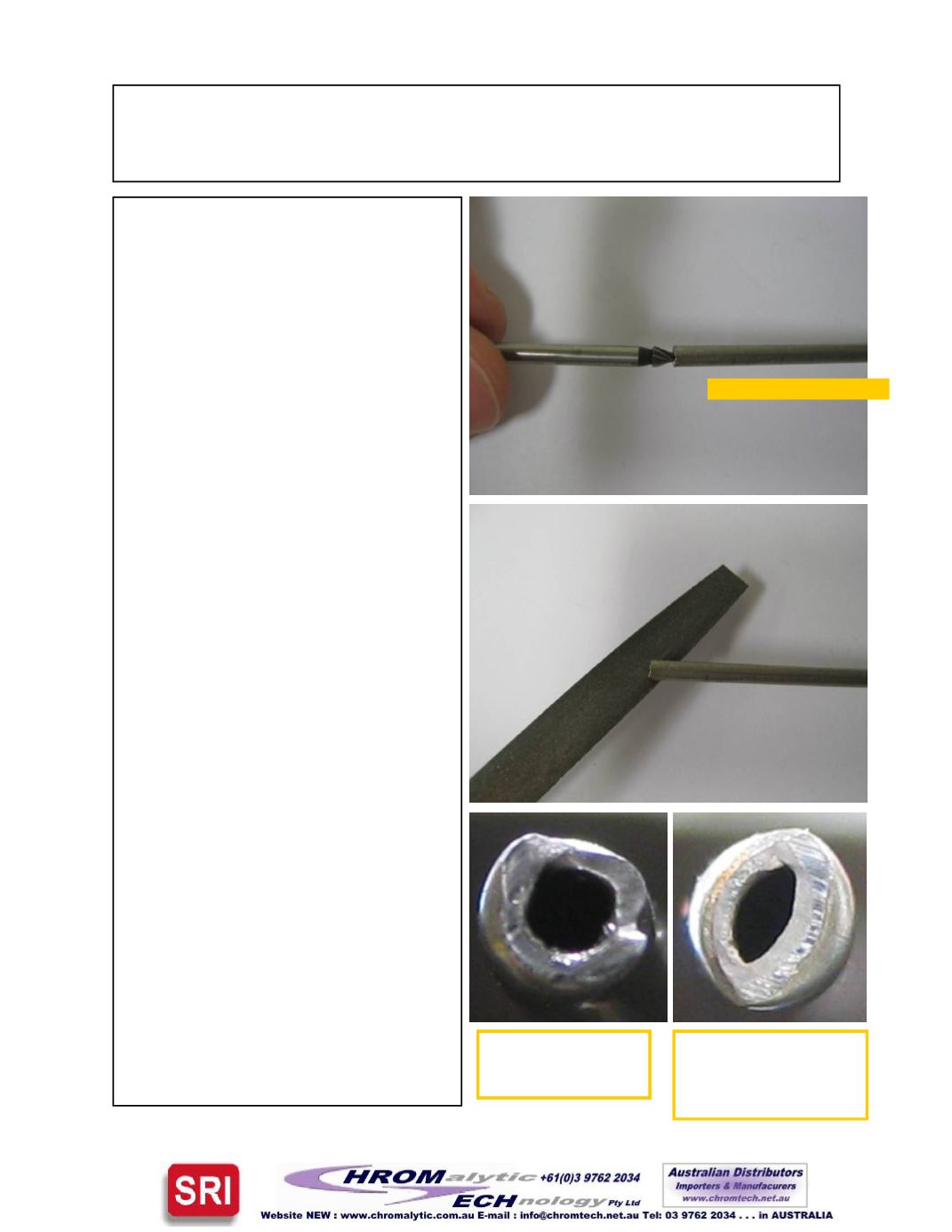
CuttingTubing for SRI GCs
The shape of the hole for the carrier and
detector ( hydrogen, air, etc ) gas tubing
which runs from the gas cylinders to the
GC is not as critical as it is for other tub-
ing connections inside theGC. As long
as the hole isopenand generally circu-
lar it will not prevent good gas chroma-
tography.
1/8” stainless steel tubing
can also be
used to connect carrier gas to theGC,
but this is not recommended because it
is sohard toworkwith. There isno ad-
vantage to using stainless steel and it is
muchmore expensive than 1/8” copper.
If you insist onusing stainless steel tub-
ing, youmust use a cuttingwheel to cut
it. TheSRI tubing cutter cannot cut 1/8”
stainless. Use a de-burring tool toopen
up the internal hole andametal file to
smooth any sharp edges ormetal
shards. Get ridof theparticles so they
don’t enter theGC.
1/16” ( .067 ) stainless steel tubing
is
used to plumb valvesand connect col-
umns in the column oven, andmay also
be used to connect gases to theGC.
This type of tubing comes in various in-
ternal diameters. .040” ( 1mm ) id is the
most common size. Internal diameters
smaller than .030” are too small tobe
used as supply gas tubing, but may be
used inside theGC to connect columns
and valves. When used inside theGC in
areaswhere the sample passes through
the tubing it is important to get the clean-
est cut and roundest hole to avoid vor-
texes and dead volumeswhichmight
affect thepeak shapes.
Page3
1/16” stainless steel
tubing cut well. Notice
the roundhole.
In this cut thehole is
smashed intoanoval.
Ferrulesmay not even fit
onto this tubing.
(1)
1/8” stainless tubing


